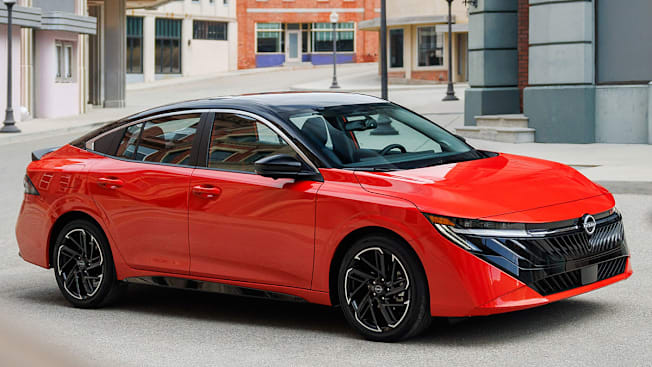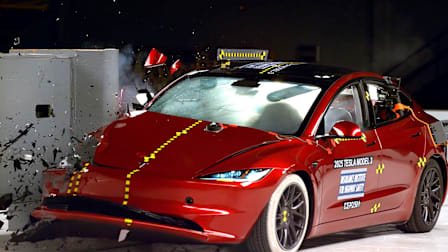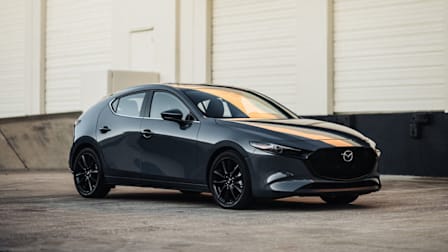Preview: 2026 Nissan Sentra Gets Modernized With New Look, More Tech
The Sentra now offers more advanced driver aids and replaces antiquated features, but loses some easier-to-use controls in the process
The 2026 Nissan Sentra finally brings one of CR’s Top Picks into the 2020s, for better and for worse. The model now offers an active driving assistance system, wireless Android Auto and Apple CarPlay, and larger dual 12.3-inch screens that feel like they belong in the current year. The antiquated foot-operated parking brake is gone as well, replaced by an electric one on the center console.
Unfortunately, part of that modernization includes the addition of touch-sensitive buttons for the climate control, which are typically harder to use without taking your eyes off the road than a set of regular, clearly separated buttons that click when pressed.
- Nissan Sentra: CR's Take Outside Inside What Drives It Safety and Driver Assistance
CR's Take
The updates are somewhat of a mixed bag. It’s good to see more creature comforts and robust driver assists make their way onto a vehicle that’s historically been one of the most affordable rides on the road. We’re especially glad to see the foot-operated parking brake pedal get discontinued, never to bang our shins again. However, we’re less enthused to see climate controls moved away from physical knobs and buttons.
Most of the technology that’s now being offered on the Sentra, such as Nissan’s ProPilot Assist active driving assistance system and wireless smartphone connectivity, has been offered for a while on other Nissan models. Hopefully, this means that the Sentra’s price stays relatively reasonable in its class. Currently, the Sentra is the second least expensive CR Recommended vehicle by transaction price. The reintroduction of a more loaded-up SL trim sounds promising, given that flimsy-feeling trim pieces are one of the current Sentra’s weak points, but will a Sentra filled with that many bells and whistles still be a reasonable buy?
Where the Sentra has fallen short in CR’s owner surveys is in comfort and value, and while the introduction of more modern extras may help it on the value front, what hasn’t been updated may be where this latest Sentra still falls behind. The engine carries over from the previous model, and we’ll have to see if it’s still adequate despite being less powerful than many other base-model engines now offered in the compact sedan class. The exterior dimensions remain the same as well, and we’re curious how much has changed when it comes to ergonomics and fit inside the car. While the current back seat is one of the roomier ones in its class, some drivers’ knees rubbed up against the thick center console.
Outside
The Sentra’s exterior was refreshed with the latest version of Nissan’s current design language, featuring a wide, angular grin-shaped grille up front and angular lights that frame it. The Sentra’s lights display a welcome pattern when the vehicle gets unlocked, and an available set of LED lights will even turn black when not in use. The rear features a full-width dark plastic bar that incorporates the taillights, which are separated by a black piece in the bar in the center.
There are 16-, 17-, and 18-inch wheels available for the Sentra, which, along with character lines down the sides of the car, help give the Sentra a more aggressive, low-to-the-ground appearance.
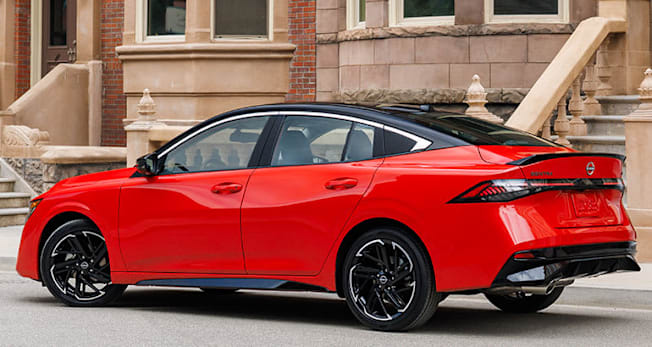
Photo: Nissan Photo: Nissan
Inside
One of the biggest upgrades to the new Sentra is a 12.3-inch central touchscreen found on all models. This is a big step up from the 8-inch version that’s found only on the top-trim 2025 Sentra. All models, save for the base S, get a second 12.3-inch screen as a driver’s information display; the base S trim gets a 7-inch display there instead. Nissan claims the new displays are two times brighter than those in the current model, allowing for better visibility.
The old climate control knobs and buttons that we commended for being easy to use are gone, replaced with a slick touch-sensitive climate control panel on all models. Automatic climate control is standard on the SV trim and up, and dual-zone automatic climate control is standard on the SL and optional on the SR.
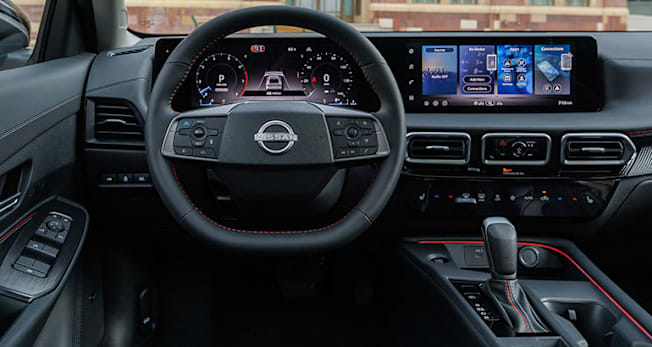
Photo: Nissan Photo: Nissan
Fortunately, the steering wheel still has traditional butts to control the driver’s display, stereo, and vehicle functions like cruise control. Android Auto and Apple CarPlay are standard, with the ability to connect wirelessly included on all but the base model.
Owners can also control three different garages using the Sentra’s new universal garage door opener, which works with myQ-compatible openers and can prompt the driver to open or close a garage door when the car is near a saved location.
Notable available upgrades include an eight-speaker Bose stereo system, satellite radio, a power sunroof, 64-color ambient lighting, a heated steering wheel, heated front seats, a wireless phone charger, and an onboard WiFi hot spot. A smart proximity key is also available that unlocks and locks the car when it detects the key coming near or walking away from the vehicle.
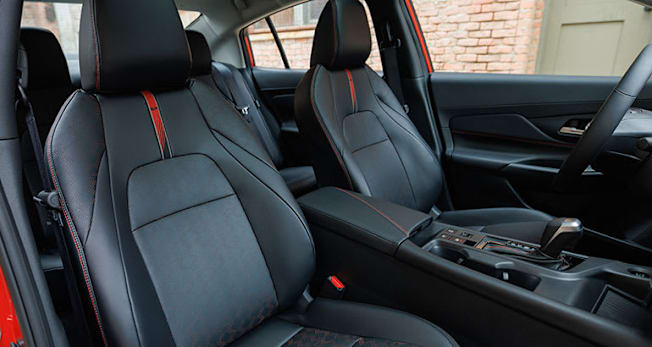
Photo: Nissan Photo: Nissan
What Drives It
Carrying over from the previous Sentra is a 2.0-liter inline-four engine with 149 hp and 146 lb.-ft. of torque. While this should be a relatively reliable engine given its years on the market, it may have been eclipsed in performance by newer powertrains offered by other compact sedans. We’ll have to wait to drive the new Sentra to see if it still (literally) pulls its weight.
For 2026, Nissan claims it retuned the continuously variable transmission (which also carries over from the 2025 model) to be smoother. With the retune, Nissan added a Sport driving mode on every Sentra grade except the base trim that increases throttle response and remaps the simulated shifting patterns of the transmission to be more aggressive.
The new Sentra is slightly less efficient than the outgoing model, with Nissan-estimated fuel economy ratings of 29/38/33 mpg city/highway/combined for the S and SV trims, and 28/36/32 mpg for the SR and SV trims. The vehicle features an engine stop-start system as standard to help save gas and reduce emissions. In our tests of the previous-generation Sentra SV, we got 32 mpg overall.
Underneath the Sentra is an independent strut front suspension and multi-link rear suspension, which tends to be better handling than some of the less expensive torsion bar setups found on economy-minded compact sedans. Nissan also reinforced the Sentra’s body to improve its handling, and revised its shock absorber valving to better isolate passengers from bumps in the road. Four-wheel disc brakes come standard.
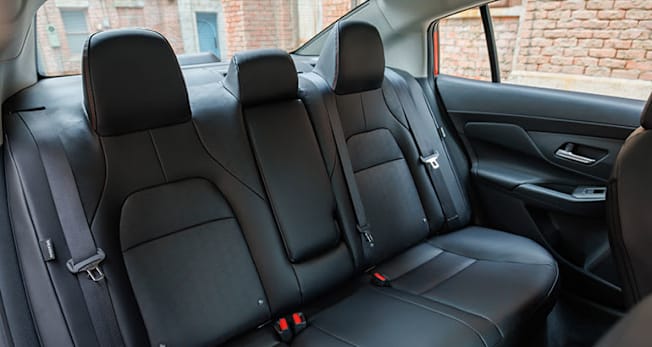
Photo: Nissan Photo: Nissan
Safety and Driver Assistance
The new Sentra includes the Nissan Safety Shield 360 suite of active safety and driver assistance features as standard, which includes automatic emergency braking with pedestrian detection, blind spot warning, rear cross traffic, lane departure warning, and automatic high beams.
Adaptive cruise control also comes standard, with Nissan’s ProPilot Assist active driving assistance system available on higher trims. ProPilot Assist can take over acceleration, steering, and braking on longer trips.
A 360-degree camera view with moving-object detection and reverse automatic emergency braking are available on the top trims.

















